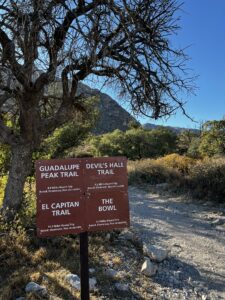Planning an Epic Summer Road Trip? Here Are 20 of America’s Most Scenic Trails to Explore! There’s nothing quite like hitting the open road in the summer, chasing adventure, and discovering breathtaking landscapes along the way. Whether you’re dreaming of towering mountain peaks, lush forests, or winding desert canyons, the best way to immerse yourself in nature is by lacing up your hiking boots and hitting the trail. To help you plan the ultimate road trip itinerary, we’ve compiled a list of 20 of the most scenic hiking trails across the U.S. From the rugged Appalachian Trail in the East to the dramatic landscapes of Zion and Yosemite in the West, these trails offer unforgettable experiences for every level of hiker. Whether you’re looking for a multi-day backpacking challenge or a short but rewarding day hike, these trails are worth adding to your summer adventure list! Appalachian Trail Extending approximately 2,194 miles from Georgia to Maine, this trail traverses the Appalachian Mountains, offering hikers diverse terrains and breathtaking vistas. Pacific Crest Trail Spanning 2,653 miles from the Mexican to the Canadian border, this trail passes through California, Oregon, and Washington, showcasing the beauty of the Sierra Nevada and Cascade ranges. Continental Divide Trail Covering 3,028 miles along the Rocky Mountains, this trail offers expansive views and diverse ecosystems from New Mexico to Montana. John Muir Trail A 211-mile trail in California’s Sierra Nevada, passing through Yosemite, Kings Canyon, and Sequoia National Parks, renowned for its high-altitude scenery. Zion Narrows Located in Zion National Park, Utah, this 16-mile trail involves hiking through the Virgin River, surrounded by towering canyon walls. Angels Landing A challenging 5.4-mile round-trip trail in Zion National Park, Utah, offering panoramic views of Zion Canyon. Bryce Canyon Rim Trail This 11-mile round-trip trail in Utah provides stunning views of Bryce Canyon’s unique hoodoo formations. Grand Canyon Rim-to-Rim A demanding 24-mile trail in Arizona that traverses the Grand Canyon from the North Rim to the South Rim, offering diverse landscapes. Yosemite Mist Trail A 7-mile round-trip trail in California’s Yosemite National Park, passing Vernal and Nevada Falls with misty, close-up waterfall experiences. Half Dome A strenuous 14- to 16-mile round-trip hike in Yosemite National Park, California, leading to the iconic granite dome with expansive views. Wonderland Trail A 93-mile loop around Mount Rainier in Washington, offering diverse ecosystems, wildflower meadows, and glacier views. Highline Trail A 15-mile round-trip trail in Montana’s Glacier National Park, providing breathtaking views of the Continental Divide and alpine scenery. Triple Lakes Trail A 9.5-mile trail in Alaska’s Denali National Park, offering serene lake views and potential wildlife sightings. Precipice Trail A challenging 2.5-mile round-trip trail in Maine’s Acadia National Park, featuring iron rungs and ladders with stunning coastal views. Alum Cave Trail A 5-mile round-trip trail in Tennessee’s Great Smoky Mountains National Park, leading to Alum Cave Bluffs with scenic forest views. Sky Pond Trail A 9-mile round-trip trail in Colorado’s Rocky Mountain National Park, passing lakes and waterfalls to reach the alpine Sky Pond. Fairy Falls Trail A 5-mile round-trip trail in Wyoming’s Yellowstone National Park, leading to one of the park’s most spectacular waterfalls. Delicate Arch Trail A 3-mile round-trip trail in Utah’s Arches National Park, leading to the iconic Delicate Arch with expansive desert views. Chesler Park Loop Trail An 11-mile loop in Utah’s Canyonlands National Park, offering views of unique red rock formations and expansive desert landscapes. Lost Palms Oasis Trail A 7.5-mile round-trip trail in California’s Joshua Tree National Park, leading to a secluded oasis with palm trees amidst the desert. 🌲 Melanie Michaelchuk, CPT-NASM | Stretch & Flexibility Coach | Eco-Therapy Guide | Hiking Enthusiast 🌲 Passionate about helping women over 40 embrace the outdoors and reach new heights, Melanie specializes in fitness training, flexibility coaching, and hiking preparation. Melanie’s goal is to empower others to build strength, confidence, and a love for the trails. About Melanie Michaelchuk Melanie Michaelchuk, CPT-NASM, is the founder of Just Hyke, a platform dedicated to inspiring women over 40 to explore the outdoors through hiking, fitness, and wellness. She’s also a personal trainer, stretch and flexibility coach, and advocate for safe and prepared adventures as a partner of Global Rescue. Melanie empowers others to embrace the benefits of nature, fitness, and mindfulness through her retreats, fitness programs, and motivational content. Ready to take your next step?Subscribe to Melanie’s updates for hiking tips, fitness plans, and inspiring stories: Subscribe Here For hiking insights, fitness tips, and upcoming events, visit her website: JustHyke and follow along at Melanie Michaelchuk Hiker! Let’s hit the trail together! 🌄 #JustHyke . #OutdoorAdventure #WomenWhoHike #HikingOver40 #FitnessAndAdventure #GoalSetting #Motivation #MindfulnessInNature #ClimbYourMountain



